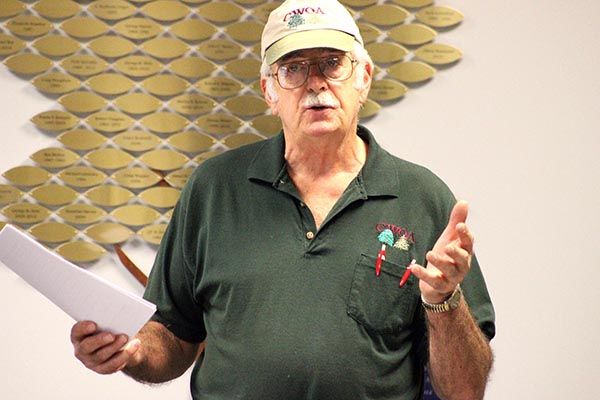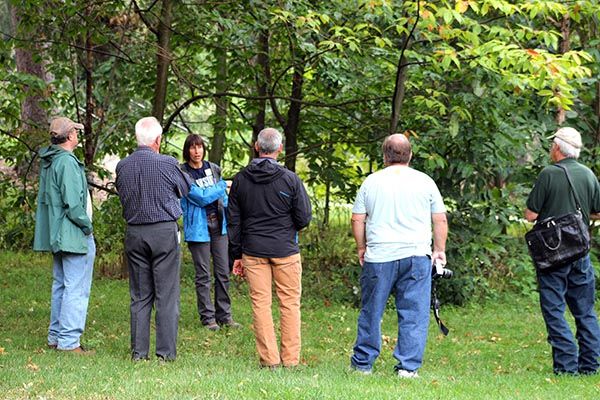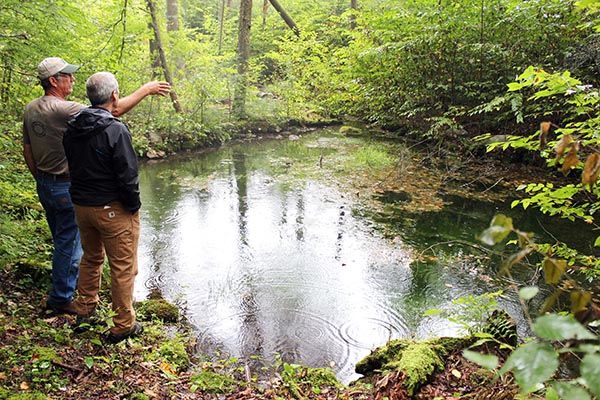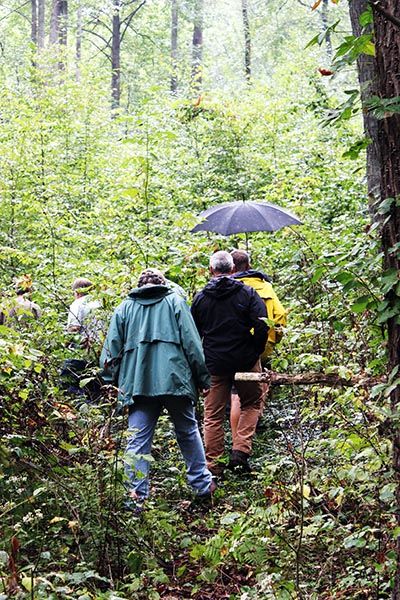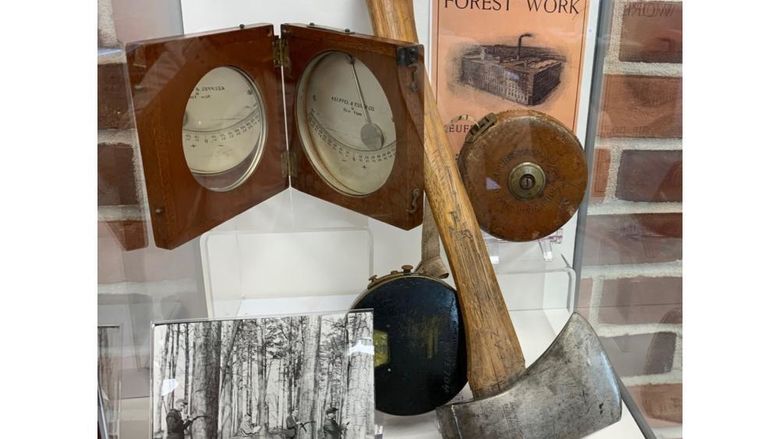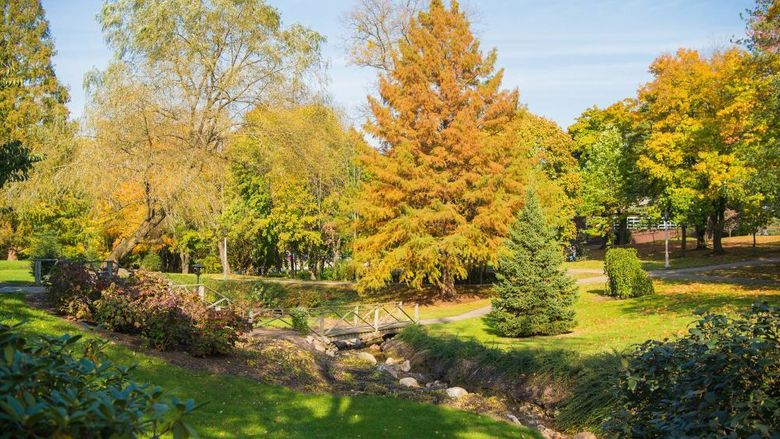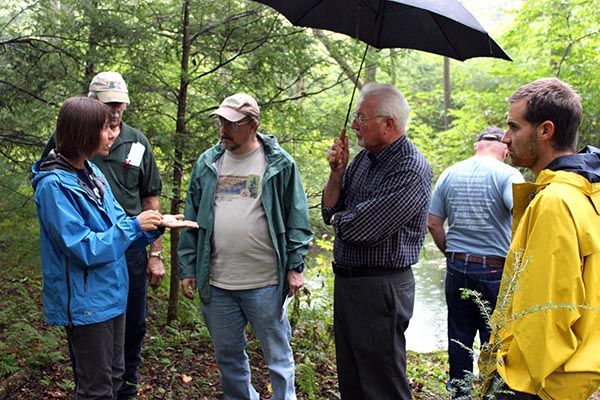
Beth Brantley, instructor in forest technology at Penn State Mont Alto, shows members of the Cumberland Woodland Owners Association an elongated hemlock scale, an insect that attacks eastern hemlocks.
On Sept. 12, Penn State Mont Alto forestry instructors Beth Brantley, Craig Houghton, and Peter Linehan hosted nine members of the Cumberland Woodland Owners Association at Penn State Mont Alto. Rain in the forecast kept many members away but the hardiest came to discuss relevant forest management topics and learn about Mont Alto’s Forest Technology Program and projects.
Following a brief meeting in The Heritage Room of The Mill Café, the group visited several sites where forest technology students and faculty members have been involved. At each stop, the instructors discussed forest management processes, answered questions, and described best practices to develop and sustain healthy forests. The day ended with a visit to the site of Mont Alto’s new LT-70 Wood-Mizer thin kerf saw mill.
“We have to take care of our forests so that the next generation can enjoy them the way we did,” said Association President Fred Peabody.
The Cumberland Woodland Owners Association is one of 22 in Pennsylvania and draws its members from Adams, Cumberland, Franklin and York counties. Members do not have to own land to participate but only have an interest in forest management. The Association provides an annual $1,000 scholarship to a Penn State Mont Alto Forest Technology student.
The group first traveled eight miles west of the Mont Alto campus to the Waynesboro Watershed in Hamilton Township, Adams County, Pennsylvania, where Penn State Mont Alto’s Forestry Program is largely responsible for forest management. One 40-acre area includes the remains of the 1876 Cold Springs Hotel and a bubbling spring, where forest technology students have worked to clear timber, thin the forest, and regenerate hemlock and white pine along with sweet birch and yellow-poplar trees. In addition, a 3,000-foot deer exclosure fence was added in 2006 to protect 12.3 acres of regenerating trees.
The group drove by an area where, in 1993, forest technology students had harvested eastern white and red pine that had blown down and an abandoned farm where forestry students established plantations in the late 1940s and early 1950s. Houghton said some Penn State Mont Alto alumni still recall planting the Norway spruce, eastern white pine, larch and other trees.
The group also saw a 2009 American chestnut plantation that required replanting in 2010. It is currently being maintained by forest technology students and some replanting of seedlings there is ongoing. Upon return to campus, the group stopped by a plantation where forestry students study crop management and do silviculture treatment projects.
While at the site of the Cold Springs Hotel a member of the association asked Brantley, “What do you want this to look like now, as it looked 300 years ago?” Her answer: “We need to accept and work with the challenges that invasive species, deer, and climate change are bringing to our forests. It is our goal to create and maintain healthy forests.”
